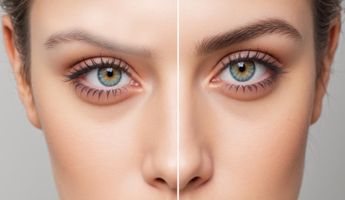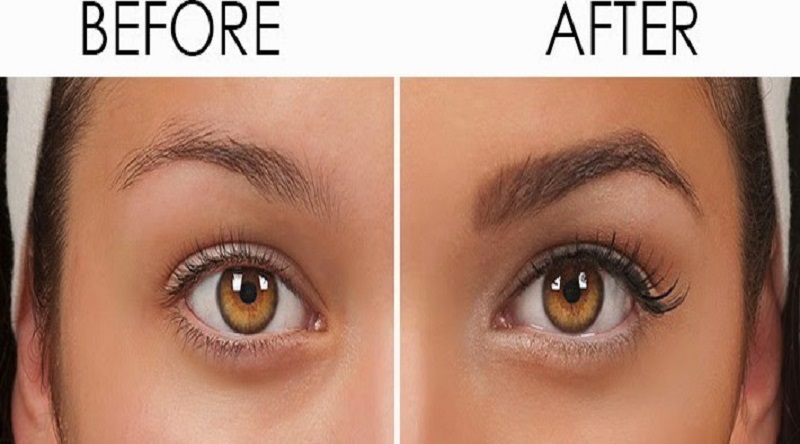Eyebrow Hair Transplant in Iran
Search and Compare the Best Clinics and Doctors at the Lowest Prices for Eyebrow Hair Transplant in Iran

Find the best clinics for Eyebrow Hair Transplant in Iran
No clinics available
India offers the best prices Worldwide
Price: $ 136

- Home
- Iran
WHY US?
At Medijump, we're making medical easy. You can search, compare, discuss, and book your medical all in one place. We open the door to the best medical providers worldwide, saving you time and energy along the way, and it's all for FREE, no hidden fees, and no price markups guaranteed. So what are you waiting for?

Free

Best Price

Widest Selection

Risk-Free
What you need to know about Eyebrow Hair Transplant in Iran

Eyebrow hair transplant is a cosmetic procedure to transfer hair grafts from one part of your body to your brow area. The goal of this procedure is to make new hair grow from the transplanted grafts to produce a fuller and natural appearance. If you are not happy with the way your eyebrows look, eyebrow hair transplant can be your more permanent solution to makeup products or eyebrow micro-blading.
What does a Eyebrow Hair Transplant Procedure Involve?
This procedure is very similar to a traditional hair transplant. You are given general anesthetic, then your doctor makes small incisions at the follicle in the donor sites (usually the hairs above your ears). After that, small incisions are made at the sites of transplantation in your eyebrows and the hair follicles are placed. Any stitches will be placed in strategic positions so the scars are virtually unnoticeable.
How Long Should I Stay in Iran for a Eyebrow Hair Transplant Procedure?
You may be able to leave the hospital immediately after the procedure. Plan to stay in Iranfor about 3 to 4 days for the initial consultation, the actual procedure, as well as a follow-up appointment to monitor your healing and removal of stitches.
What's the Recovery Time for Eyebrow Hair Transplant Procedures in Iran?
The recovery time is relatively quick. You should avoid strenuous exercises for about 3 weeks, but you may be able to return to work and most of your activities in about 5 days.
What sort of Aftercare is Required for Eyebrow Hair Transplant Procedures in Iran?
Your doctor will give you detailed instructions on how to care for your new eyebrows. You need to avoid touching or picking at your eyebrows. After several months, your new brow hairs will start to grow and you may trim them to your desired length. There are generally no dietary restrictions after the procedure.
What's the Success Rate of Eyebrow Hair Transplant Procedures in Iran?
Eyebrow hair transplant is effective, highly successful, and safe. However, it is better to be informed about the potential side effects and risks that the procedure carries, including nerve damage, excessive bleeding, swelling; bruising, scarring, infection, and the new follicles that do not produce new hairs.
Are there Alternatives to Eyebrow Hair Transplant Procedures in Iran?
Although hair transplant is currently the only procedure that offers a fuller and permanent brow hair, not everyone can undergo the procedure. If you are not an ideal candidate for the procedure, you can undergo eyebrow micro-blading or eyebrow tattoo.
What Should You Expect Before and After the Procedure
Before eyebrow hair transplant, you may not like the look of your eyebrow because you over-plucked or waxed it in the past, or you have an injury around the area. After the procedure, you should have a fuller, thicker eyebrow that looks natural and you will not need makeup to fill in your eyebrows anymore. The procedure may also boost your self-confidence.
Whilst the information presented here has been accurately sourced and verified by a medical professional for its accuracy, it is still advised to consult with your doctor before pursuing a medical treatment at one of the listed medical providers
No Time?
Tell us what you're looking for and we'll reachout to the top clinics all at once
Enquire Now

Popular Procedures in Iran
Prices Start From $126

Prices Start From $347

Prices Start From $220

Prices Start From $500

Recommended Medical Centers in Iran for procedures similar to Eyebrow Hair Transplant

- Interpreter services
- Translation service
- Religious facilities
- Medical records transfer
- Medical travel insurance
- Health insurance coordination
- TV in the room
- Safe in the room
- Phone in the room
- Private rooms for patients available

- Interpreter services
- Translation service
- Religious facilities
- Medical records transfer
- Medical travel insurance
- Health insurance coordination
- TV in the room
- Safe in the room
- Phone in the room
- Private rooms for patients available

- Interpreter services
- Translation service
- Religious facilities
- Medical records transfer
- Medical travel insurance
- Health insurance coordination
- TV in the room
- Safe in the room
- Phone in the room
- Private rooms for patients available

- Interpreter services
- Translation service
- Religious facilities
- Medical records transfer
- Medical travel insurance
- Health insurance coordination
- TV in the room
- Safe in the room
- Phone in the room
- Private rooms for patients available
Eyebrow Hair Transplant in and around Iran
Introduction
Iran is a country situated in Western Asia, as well as the second-largest in the Middle East. It is home to one of the oldest civilizations in the world, starting from the fourth millennium BC when the Elamite Kingdoms were formed. Iran is widely known as the jewel in Islam’s crown, filled with awe-inspiring architecture and friendly people. The country is also a popular medical tourism destination due to its efficient healthcare system and experienced specialists. The medical centers in the country keep pace with the latest medical developments and provide top-class services. International medical tourists usually come to Iran for cosmetic procedures, which are currently witnessing a vast growth. Cosmetic procedures in the country, such as rhinoplasty and hair transplant, are performed with advanced scientific techniques and are highly successful. Furthermore, the healthcare cost in the country is a lot more affordable than in many other Western countries.
Popular Cities and Regions in Iran
The capital of Iran, Tehran, is the most populous city in the country. Situated at the foot of the snow-capped Alborz mountain range, the city is filled with museums, restaurants, parks, and friendly people. The most popular landmark in this city is the Azadi Tower, which is the symbol of the city. Besides this tower, visitors can also go to the Tehran City Theater to see its amazing architecture, explore the Treasury of the National Jewels to admire the largest collection of jewels found in the world and visit the Golestan Palace, which is the oldest historic monument in Tehran. Besides Tehran, Tabriz is another popular city and it is a modern industrialized city with a very rich history and historical monuments, such as the Blue Mosque and El Goli.
Transport in Iran
The main international airport is the new Imam Khomeini International Airport in Tehran. It serves international flights to and from numerous cities around the world, including Dubai, Ankara, London, Bangkok, and Beijing. Budget airlines are operating from this airport, such as Pegasus Airlines and Air Asia. To get around Iran, domestic flights are affordable and fast. Buses and trains are also widely available with extensive networks. Taxis are best for inter-city travel.
Visas in Iran
Iran allows citizens of 16 countries to visit without a visa for up to 90 days, including Armenia, China, and Malaysia. Most citizens of other countries can obtain a visa on arrival. However, visa on arrival does not apply to citizens of 14 other countries, such as the US and the UK.
Weather in Iran
Iran experiences four seasons. Spring (March-May) and autumn (September –October) are pleasant with mild temperatures. Summer (June to August) can be scorching hot, with the temperatures soaring to 37°C. The winter can get bitterly cold as the temperatures drop to 0°C.
Additional Info
- Local Currency: The official currency is the Iranian rial (IR). 1 USD is approx. 41,921 IR.
- Money & Payments: You cannot use ATMs, credit or debit cards, or traveler's cheques in Iran. Therefore, bring all you’ll need in cash.
- Local Language: Persian is the official language in Iran. However, the country has several main languages, including Azerbaijani and Kurdish. Not many people speak English in the country.
- Local Culture and Religion: About 99% of Iran’s population is Muslims, with the Shia branch of Islam as the biggest. The two largest non-Muslim religious minorities are Christianity and Bahá'í Faith.
- Public holidays: Islamic Revolution Day, Nature Day, Eid e-Fitr, and Eid-e-Qorban are some of the most important public holidays in Iran.
Popular Searches
- Plastic Surgery in Thailand
- Dental Implants in Thailand
- Hair Transplant in Thailand
- Breast Augmentation Thailand
- Gastric Sleeve in Thailand
- Gender Reassignment Surgery in Thailand
- Laser Hair Removal in Bangkok
- Botox in Bangkok
- Dermatology in Bangkok
- Breast Augmentation in Bangkok
- Coolsculpting in Bangkok
- Veneers in Turkey
- Hair Transplant in Turkey
- Rhinoplasty in Turkey
- Stem Cell Therapy in Mexico
- Rhinoplasty in Mexico
- Liposuction in Mexico
- Coolsculpting in Tijuana
- Rhinoplasty in Korea
- Scar Removal in Korea
- Gastric Sleeve in Turkey
- Bone Marrow Transplant in India
- Invisalign in Malaysia
- Plastic Surgery in the Dominican Republic
- Tummy Tuck in the Dominican Republic
- Plastic and Cosmetic Surgery in Poland
- Rhinoplasty in Poland
- Hair Implant in Poland
- Dental Implants in Poland
- IVF in Turkey